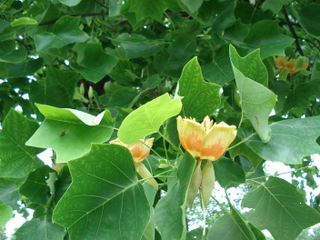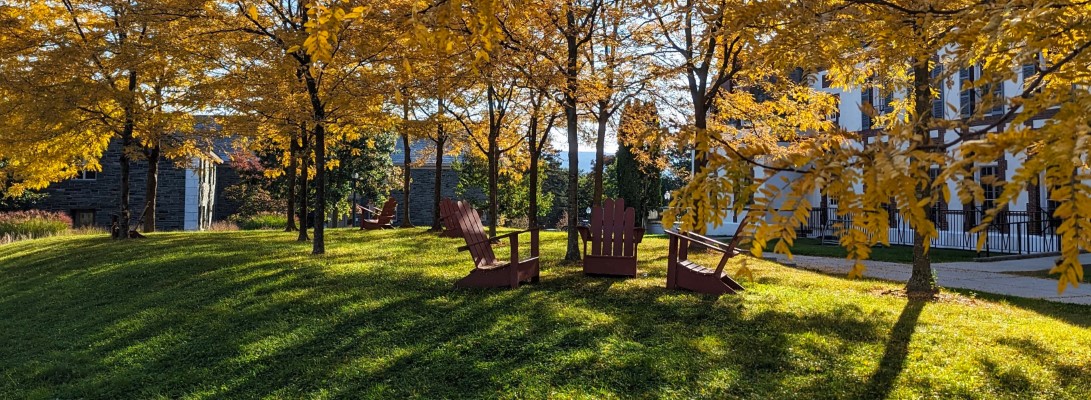Twice today people came up to me, (speaking English, they were staff, not Language School)(I took Russian in Prep School, forgotten most of it), asking what these particular trees were in bloom on campus. Liriodendron tulipifera, Tuliptree, is flowering all over campus right now.
While one of the common names makes it sound like a poplar, it is actually in the Magnolia family. Tuliptree is an ancient plant, dating from the Cretaceous Period, when the Tyrannosaurs were eating the little ones, and the first deciduous trees were rising from the fern and cycad swamps below.
Native to southern Vermont, we are probably at the northern end of its range. The largest in Vermont towers at 116 feet, and this is not uncommon for the species. You can see its forest heritage in the tendency to grow tall, straight non-branching trunks. In the woods it often won’t have leaves for 40+feet.
A copius nectar producer, it is busy right now attracting bees, flies, beetles, and honeybees. Look for a great clear yellow fall color, in it’s 3 lobed (mutated mitten) shaped leaves. Very few pests are attracted to Tuliptree, but sometimes aphids can attack, causing a leaf mold to develop.
While native to rich, deep, moist soils, it is thriving in our campus clay. The wood is remarkably light, filled with air, and was used by Native Americans for canoes. While technically a hardwood, the wood is softer than almost all of the softest “softwood” conifers. Easily milled or cut by hand, the wood was used by settlers for cabins, shingles, furniture, and shipping crates.
I’ve never really seen Tuliptree for sale locally, but Vermonters, as opposed to those down south on small house lots, probably have the space for one. Think of it as a park tree, where it can grow in unimpeded glory. I’ve seen a variegated leaf form once or twice, but only for sale, never in a large tree.
(For more on this tree, read Trees of New England by Charles Fergus, whom I hereby credit with some of the more esoteric and cool facts I just wrote)
